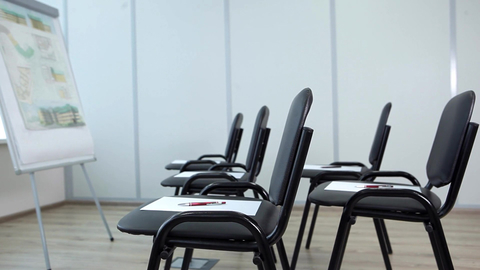I've lost count of the number of times I've been asked the question, "Why won’t anyone come to the meeting?" I’ve heard it in groups in which I am a volunteer, and I've been asked many times during the past 30 years to teach a workshop on this topic.
There are many possible reasons for why people aren’t showing up at meetings; however, after connecting with many community groups and organizations in a variety of different settings, I’ve narrowed it down to these two common reasons: not feeling valued and poorly run meetings.
Everyone suffers when meetings get bogged down or go off track.
When meetings are consistently unproductive, people eventually stop showing up. You can avoid this situation with a bit of good planning and some skillful facilitation by those involved. Consider the following agenda tips for better meetings.
Tips for better meetings
Define desired results and the meeting time frame
Be clear about why the meeting needs to take place and what you need to accomplish. There is nothing more frustrating than a meeting without a purpose (aka meeting just for the sake of meeting).
List agenda topics
Once you’ve decided what needs to be accomplished at the meeting, make a list of agenda items and consider why they're needed. Consider these three questions:
-
Does information need to be presented?
-
Is discussion needed?
-
Do we need to make a decision?
Put time limits on agenda items
Be sure to allot appropriate amounts of time to accomplish what you need. If information needs to be presented, be sure those presenting know how much time they have to share. If there needs to be a discussion, do your best to estimate how much time will be needed.
Prioritize topics on the agenda in order of importance
Make sure important and/or complex items are early or mid-way in the agenda rather than at the end when time pressures or fatigue may hinder thoughtful discussion. If you discover you need more time for a topic, be prepared to suggest options such as moving the discussion to the end of the meeting (if time remains), removing another item from the agenda, or referring the item to the next meeting or a committee.
Suggest a process for each topic
Decide what process and tools are most appropriate for each topic (i.e., brainstorming ideas, collecting feedback, making decisions). Be explicit about the need and process to achieve what the group needs from the meeting.
Do a sanity check
After you review your agenda and list, decide whether or not what you want to do is doable in the amount of time allotted. If not, you can decide in advance to scale back or determine whether some items can be scheduled for another meeting or a committee. If you need to make changes and want to improve your agenda planning skills, check out planning an effective meeting agenda.
Create closure as you adjourn
Be sure to leave a few minutes at the end of the meeting to review what needs to happen next and to perhaps ask for feedback on how the meeting went. Taking time to evaluate meetings helps to make future meetings more productive and helps members feel their contributions are important.
Asking for feedback on the meeting isn’t the only way to help group members feel engaged.
In addition to poorly planned meetings, another common reason why people stop coming is because they don’t feel valued. Consider the following questions about engagement.
Questions to better involve others
Do the meetings allow members to engage?
If meetings are entirely focused on giving reports with very little discussion, there are few opportunities for people to get involved. They'll likely wonder why they should bother showing up for the meeting when a report can just be sent out.
Do the meetings make people feel excluded?
If meetings aren’t welcoming to everyone, it would be wise to reflect on the culture of the group and see if there are ways to make it feel more inclusive to all. When actions such as sharing agendas in advance, agreeing on group norms, using processes where all members can contribute, and assuring all voices have equal weight — individuals are more likely to be included and engaged.
Do the topics entice members to engage?
If meeting topics are always the same and there are no opportunities to bring up other items of importance or interest, people will soon lose interest. When agenda topics are identified by the members, they are more likely to show up.
Do members get invited to provide input?
If members are not asked to contribute or share either their knowledge or insight on a topic, they will disengage. When members have an opportunity to share, they will be more likely to feel it's a good use of their time to be involved.
Do members have opportunities to volunteer outside of the meetings?
If members aren’t given opportunities to volunteer in some way, they will stop engaging. When members are invited to be on a committee or participate in planning an event/activity sponsored by the group, they will be more invested in the work and look forward to attending meetings.
Engaged members are those who are involved in, enthusiastic about and committed to the work of the group.
Learn more about improving the groups you are a member of by exploring the seven common traps of committees. Creating healthy spaces where everyone feels they contribute will likely lead to more people who are excited about coming to meetings!


